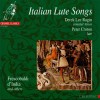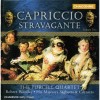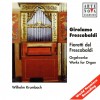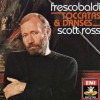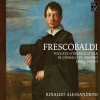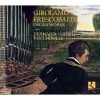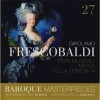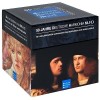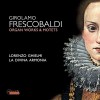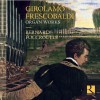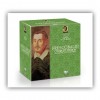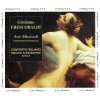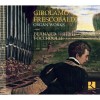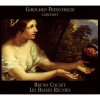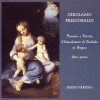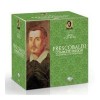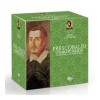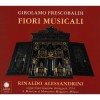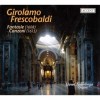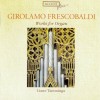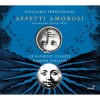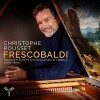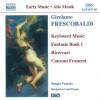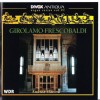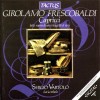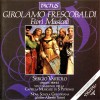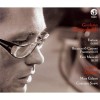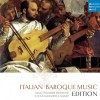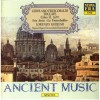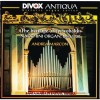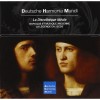Composers
Girolamo Frescobaldi (Italian pronunciation: [dʒiˌɾɔːlamo fɾeskoˈbaldi]; September, 1583 – March 1, 1643) was a musician from Ferrara, one of the most important composers of keyboard music in the late Renaissance and early Baroque periods. A child prodigy, Frescobaldi studied under Luzzasco Luzzaschi in Ferrara, but was influenced by a large number of composers, including Ascanio Mayone, Giovanni Maria Trabaci, and Claudio Merulo. Girolamo Frescobaldi was appointed “organist” of St. Peter's Basilica, a focal point of power for the Capella Giulia (a musical organisation) from July 21, 1608 until 1628 and again from 1634 until his death. Frescobaldi's printed collections contain some of the most influential music of the 17th century. His work influenced Johann Jakob Froberger, Johann Sebastian Bach, Henry Purcell, and countless other major composers. Pieces from his celebrated collection of liturgical organ music, Fiori musicali (1635), were used as models of strict counterpoint as late as the 19th century.
The composer was born in Ferrara, Italy. His father Filippo was a man of property, possibly an organist, since both Girolamo and his half-brother Cesare became organists. (There is no evidence that the Frescobaldi of Ferrara were related to the homonymous Florentine noble house.) Frescobaldi studied under Luzzasco Luzzaschi, a noted composer of madrigals and an organist at the court of Duke Alfonso II d'Este. Although Luzzaschi's keyboard music is relatively unknown today (much of it has been lost), contemporary accounts suggest he was both a gifted composer and performer, one of the few who could perform and compose for Nicola Vicentino's arcicembalo.[4] Contemporary accounts describe Frescobaldi as a child prodigy who was "brought through various principal cities of Italy"; he quickly gained prominence as a performer and patronage of important noblemen. Composers who visited Ferrara during the period included numerous important masters such as Claudio Monteverdi, John Dowland, Orlande de Lassus, Claudio Merulo, and, most importantly, Carlo Gesualdo.
In his early twenties, Frescobaldi left his native Ferrara for Rome. Reports place Frescobaldi in that city as early as 1604, but his presence can only be confirmed by 1607. He was the church organist at Santa Maria in Trastevere, recorded as “Girolamo Organista”, from January to May of that year. He was also employed by Guido Bentivoglio, the Archbishop of Rhodes, and accompanied him on a trip to Flanders where Bentivoglio had been made nuncio to the court. It was Frescobaldi's only trip outside Italy.[6] Although the court at Brussels was musically among the most important in Europe at the time, there is no evidence of Peeter Cornet's or Peter Philips' influence on Frescobaldi. Based on Frescobaldi's preface to his first publication, the 1608 volume of madrigals, the composer also visited Antwerp, where local musicians, impressed with his music, persuaded him to publish at least some of it. While abroad, Frescobaldi was elected on 21 July 1608 to succeed Ercole Pasquini as organist of St. Peter's Basilica in Rome. Frescobaldi remained in Flanders, however, through the summer and did not return to Rome until 29 October (delaying his arrival with an extended stay in Milan to publish another collection of music, the keyboard Fantasie).He took up his duties on 31 October and held the position, albeit intermittently, until his death. He also joined Enzo Bentivoglio's musical establishment after the latter settled in Rome in 1608, although he grew estranged from his patron after an affair with a young woman. A scandal involving competition between Bentivoglio and the Medici family eventually forced him to leave his position.
Between 1610–13 Frescobaldi began to work for Cardinal Pietro Aldobrandini. He remained in their service until after the death of Cardinal Aldobrandini in February of 1621. On February 18, 1613, he married Orsola Travaglini, known as Orsola del Pino. The couple had five children: Francesco (an illegitimate child born May 29, 1612), Maddalena (an illegitimate child born July 22, 1613), Domenico (November 8, 1614, poet and art collector), Stefano (1616/7), and Caterina (September 1619).
In October of 1614, Frescobaldi was approached by an agent of the Duke of Mantua, Ferdinando I Gonzaga. Frescobaldi was given such a good offer he agreed to enter his employ. However, at his arrival in Mantua the reception was so cold that Frescobaldi returned to Rome by April 1615. He continued publishing his music: two editions of the first book of toccatas and a book of ricercars and canzonas appeared in 1615. In addition to his duties at the Basilica and the Aldobrandini establishment, Frescobaldi took pupils and occasionally worked at other churches. The period from 1615-28 was Frescobaldi’s most productive time. His major works from this period were instrumental pieces including: a second version of the first book of toccatas (1615-6), ricercars and canzonas (1615), the cappricios (1624), the second book of toccatas (1627), and a volume of canzonas for one to four instruments and continuo (1628).
St. Peter’s Basilica gave Frescobaldi permission to leave Rome November 22, 1628. Girolamo moved to Florence,Italy into the service of the Grand Duke of Tuscany, a Medici. During his sojourn there he was the highest paid musician and served as the organist of the Florence baptistery for a year. He stayed in the city until 1634; the period resulted in, among other things, the publication of two books of arias (1630). The composer returned to Rome in April 1634, having been summoned into the service of the powerful Barberini family, i.e. Pope Urban VIII Barberini,the highest prize offered to any musician. He continued working at St. Peter's, and was also employed by Cardinal Francesco Barberini, who also employed the famous lutenist Johannes Hieronymus Kapsberger. Frescobaldi published one of his most influential collections, Fiori musicali, in 1635, and also produced reprints of older collections in 1637. No other prints followed (although a collection of previously unpublished works appeared in 1645, and in 1664 Domenico Frescobaldi still possessed pieces by his father that were never published). Frescobaldi died on 1 March 1643 after an illness that lasted for 10 days. He was buried in Santi Apostoli, but the tomb disappeared during a rebuilding of the church in late 18th century. A grave bearing his name and honoring him as one of the fathers of Italian music exists in the church today.
Recently Added
Biography
Girolamo Frescobaldi (Italian pronunciation: [dʒiˌɾɔːlamo fɾeskoˈbaldi]; September, 1583 – March 1, 1643) was a musician from Ferrara, one of the most important composers of keyboard music in the late Renaissance and early Baroque periods. A child prodigy, Frescobaldi studied under Luzzasco Luzzaschi in Ferrara, but was influenced by a large number of composers, including Ascanio Mayone, Giovanni Maria Trabaci, and Claudio Merulo. Girolamo Frescobaldi was appointed “organist” of St. Peter's Basilica, a focal point of power for the Capella Giulia (a musical organisation) from July 21, 1608 until 1628 and again from 1634 until his death. Frescobaldi's printed collections contain some of the most influential music of the 17th century. His work influenced Johann Jakob Froberger, Johann Sebastian Bach, Henry Purcell, and countless other major composers. Pieces from his celebrated collection of liturgical organ music, Fiori musicali (1635), were used as models of strict counterpoint as late as the 19th century.
The composer was born in Ferrara, Italy. His father Filippo was a man of property, possibly an organist, since both Girolamo and his half-brother Cesare became organists. (There is no evidence that the Frescobaldi of Ferrara were related to the homonymous Florentine noble house.) Frescobaldi studied under Luzzasco Luzzaschi, a noted composer of madrigals and an organist at the court of Duke Alfonso II d'Este. Although Luzzaschi's keyboard music is relatively unknown today (much of it has been lost), contemporary accounts suggest he was both a gifted composer and performer, one of the few who could perform and compose for Nicola Vicentino's arcicembalo.[4] Contemporary accounts describe Frescobaldi as a child prodigy who was "brought through various principal cities of Italy"; he quickly gained prominence as a performer and patronage of important noblemen. Composers who visited Ferrara during the period included numerous important masters such as Claudio Monteverdi, John Dowland, Orlande de Lassus, Claudio Merulo, and, most importantly, Carlo Gesualdo.
In his early twenties, Frescobaldi left his native Ferrara for Rome. Reports place Frescobaldi in that city as early as 1604, but his presence can only be confirmed by 1607. He was the church organist at Santa Maria in Trastevere, recorded as “Girolamo Organista”, from January to May of that year. He was also employed by Guido Bentivoglio, the Archbishop of Rhodes, and accompanied him on a trip to Flanders where Bentivoglio had been made nuncio to the court. It was Frescobaldi's only trip outside Italy.[6] Although the court at Brussels was musically among the most important in Europe at the time, there is no evidence of Peeter Cornet's or Peter Philips' influence on Frescobaldi. Based on Frescobaldi's preface to his first publication, the 1608 volume of madrigals, the composer also visited Antwerp, where local musicians, impressed with his music, persuaded him to publish at least some of it. While abroad, Frescobaldi was elected on 21 July 1608 to succeed Ercole Pasquini as organist of St. Peter's Basilica in Rome. Frescobaldi remained in Flanders, however, through the summer and did not return to Rome until 29 October (delaying his arrival with an extended stay in Milan to publish another collection of music, the keyboard Fantasie).He took up his duties on 31 October and held the position, albeit intermittently, until his death. He also joined Enzo Bentivoglio's musical establishment after the latter settled in Rome in 1608, although he grew estranged from his patron after an affair with a young woman. A scandal involving competition between Bentivoglio and the Medici family eventually forced him to leave his position.
Between 1610–13 Frescobaldi began to work for Cardinal Pietro Aldobrandini. He remained in their service until after the death of Cardinal Aldobrandini in February of 1621. On February 18, 1613, he married Orsola Travaglini, known as Orsola del Pino. The couple had five children: Francesco (an illegitimate child born May 29, 1612), Maddalena (an illegitimate child born July 22, 1613), Domenico (November 8, 1614, poet and art collector), Stefano (1616/7), and Caterina (September 1619).
In October of 1614, Frescobaldi was approached by an agent of the Duke of Mantua, Ferdinando I Gonzaga. Frescobaldi was given such a good offer he agreed to enter his employ. However, at his arrival in Mantua the reception was so cold that Frescobaldi returned to Rome by April 1615. He continued publishing his music: two editions of the first book of toccatas and a book of ricercars and canzonas appeared in 1615. In addition to his duties at the Basilica and the Aldobrandini establishment, Frescobaldi took pupils and occasionally worked at other churches. The period from 1615-28 was Frescobaldi’s most productive time. His major works from this period were instrumental pieces including: a second version of the first book of toccatas (1615-6), ricercars and canzonas (1615), the cappricios (1624), the second book of toccatas (1627), and a volume of canzonas for one to four instruments and continuo (1628).
St. Peter’s Basilica gave Frescobaldi permission to leave Rome November 22, 1628. Girolamo moved to Florence,Italy into the service of the Grand Duke of Tuscany, a Medici. During his sojourn there he was the highest paid musician and served as the organist of the Florence baptistery for a year. He stayed in the city until 1634; the period resulted in, among other things, the publication of two books of arias (1630). The composer returned to Rome in April 1634, having been summoned into the service of the powerful Barberini family, i.e. Pope Urban VIII Barberini,the highest prize offered to any musician. He continued working at St. Peter's, and was also employed by Cardinal Francesco Barberini, who also employed the famous lutenist Johannes Hieronymus Kapsberger. Frescobaldi published one of his most influential collections, Fiori musicali, in 1635, and also produced reprints of older collections in 1637. No other prints followed (although a collection of previously unpublished works appeared in 1645, and in 1664 Domenico Frescobaldi still possessed pieces by his father that were never published). Frescobaldi died on 1 March 1643 after an illness that lasted for 10 days. He was buried in Santi Apostoli, but the tomb disappeared during a rebuilding of the church in late 18th century. A grave bearing his name and honoring him as one of the fathers of Italian music exists in the church today.
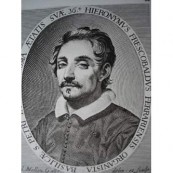

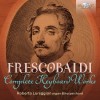
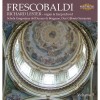
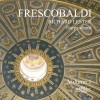
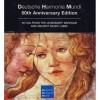
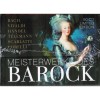
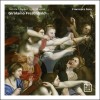
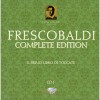
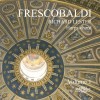
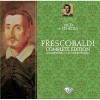
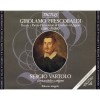
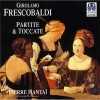


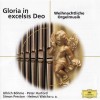
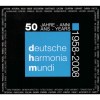
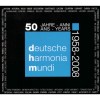
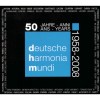
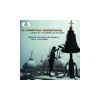
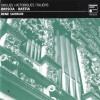
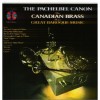
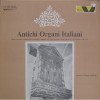
![Het Historische Orgel in Nederland [CD 5 of 20]](http://static.classicalm.com/repository/collection-cover/small/989-img1343295469656644.jpg)
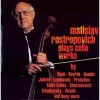
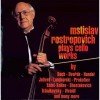
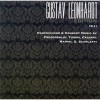
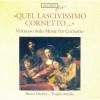
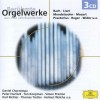
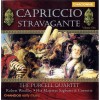
![Festliche Barocktrompete [CD 2 of 3]](http://static.classicalm.com/repository/disk-cover/small/2630-img1356187671525664.jpg)
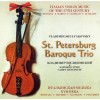
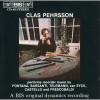
![Andres Segovia. A Centenary Celebration. [CD 1 of 3]](http://static.classicalm.com/repository/disk-cover/small/2962-img1365010036358113.jpg)
